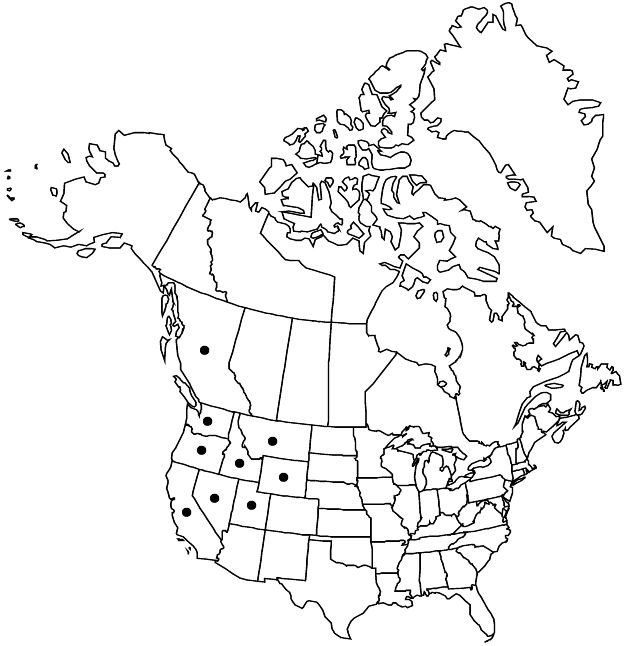Sidalcea oregana subsp. oregana
Plants (0.3–) 0.8–1.5 m, clumps often 20–30 cm diam., with fibrous-woody taproot or caudex. Stems 3–20, branched or not, usually solid, sometimes ± hollow on older, robust plants, base glabrous or stellate-hairy, hairs to 1 mm, sometimes bristly with appressed, infrequently spreading, hairs, stem distally less hairy, sometimes glabrous or glaucous. Leaves: stipules sometimes purple, linear, 4–6 × 0.5–1 mm; petioles 10–20 (–35) cm on basal leaves, proximalmost 3–5 times as long as blades, greatly reduced distally to 1/2 times blade length; blade 5–15 × 5–15 inflorescence; bracts linear, distal simple and undivided to 2-fid, proximal divided to base, 4–5 mm, usually shorter than young flower buds, usually equaling or longer than pedicels, shorter than calyx. Pedicels 2–5 (–10) mm, 3 mm in flower, 5 mm in fruit. Flowers bisexual or, infrequently, unisexual and pistillate, plants gynodioecious; calyx 5–8 mm, to 10 mm in fruit, usually densely, uniformly stellate-puberulent, marginal hairs sometimes longer, sometimes nearly glabrous; petals bright pink to rose-pink, often pale at base, 9–20 mm, pistillate 5–10 mm, bisexual 10–15 mm; staminal column 4–6 mm, hairy; anthers white; stigmas (6 or) 7 or 8. Schizocarps 6–7 mm diam.; mericarps (6 or) 7 or 8, 2.5–3 mm, usually glabrous, sometimes nearly smooth, back usually rugose-roughened, sides reticulate-veined, sometimes rugose-roughened, mucro 0.3–0.7 mm. Seeds 2 mm. 2n = 20, 40, 60.
Phenology: Flowering (May–)Jun–Aug(–Sep).
Habitat: Moist meadows
Elevation: 500–2500 m
Distribution

B.C., Calif., Idaho, Mont., Nev., Oreg., Utah, Wash., Wyo.
Discussion
Subspecies oregana is variable; it intergrades with subsp. spicata and Sidalcea setosa. C. L. Hitchcock (1957) accepted five varieties within the typical subspecies; morphological intergrades exist. A case can be made for recognition of var. calva C. L. Hitchcock, which has been listed as endangered both federally and in Washington, where it is endemic. These plants are generally robust, sparsely appressed-hairy with four-rayed hairs, the leaves are generally nearly glabrous and fleshy-textured, and the calyx lobes are subglabrous and ciliate. Found in the Wenatchee Mountains, an area of high endemism, var. calva does not appear to be much different from other, nearly glabrous populations elsewhere; it appears to be the only variety with a chromosome count of 2n = 60. This treatment does not accept both subspecies and varieties within Sidalcea; therefore, it has been placed here into synonymy with the wide-ranging, variable typical subspecies. Subspecies oregana can generally be distinguished from the other subspecies by its more-open inflorescences that are elongated in fruit, its multistemmed clumps as much as 30 cm in diameter, its generally stellate-hairy to glabrescent stem bases, its generally uniformly stellate-hairy calyces, its somewhat reticulate-roughened mericarps, and its bracts that are generally equal to or shorter than the young flower buds. Subspecies oregana appears to be the source of commonly sold cultivars. It has been listed as sensitive in Montana and as rare in British Columbia.
Selected References
None.
Lower Taxa
"elongating" is not a number."elongated" is not a number.